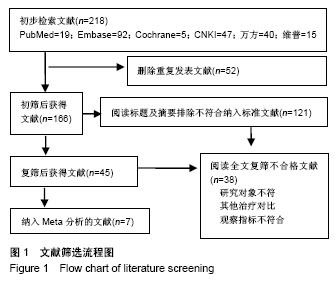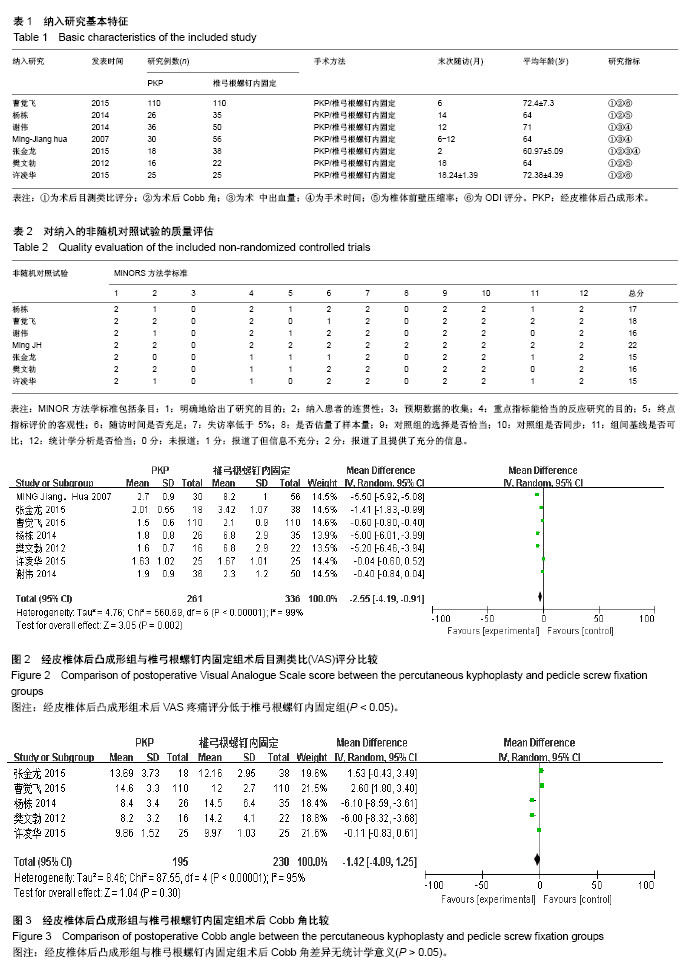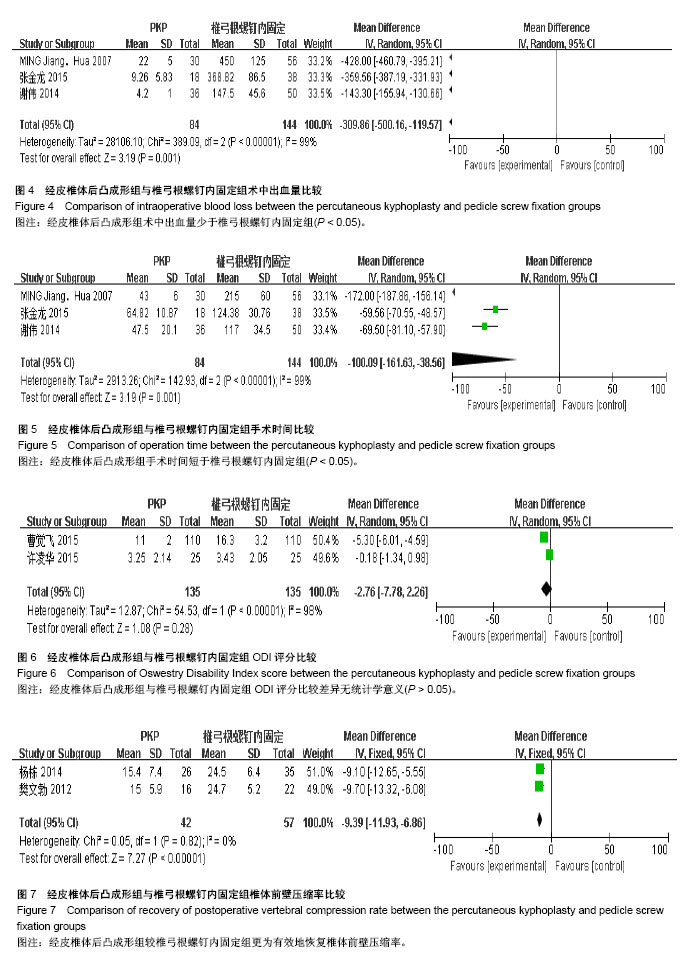中国组织工程研究 ›› 2018, Vol. 22 ›› Issue (23): 3766-3772.doi: 10.3969/j.issn.2095-4344.0242
• 骨与关节循证医学 evidence-based medicine of the bone and joint • 上一篇
经皮椎体后凸成形和椎弓根螺钉内固定治疗老年骨质疏松胸腰椎压缩性骨折的Meta分析
秦 琦,史晨辉,王维山,戴 毅,赵家瑞,高 鹏,张 斌
- 石河子大学医学院第一附属医院,新疆维吾尔自治区石河子市 832000
Percutaneous kyphoplasty and pedicle screw fixation in the treatment of senile osteoporotic thoracolumbar compression fracture: a meta-analysis
Qin Qi, Shi Chen-hui, Wang Wei-shan, Dai Yi, Zhao Jia-rui, Gao Peng, Zhang Bin
- First Affiliated Hospital, School of Medicine, Shihezi University, Shihezi 832000, Xinjiang Uygur Autonomous Region, China
摘要:
文章快速阅读:
.jpg)
文题释义:
经皮椎体后凸成形术(percutaneous kyphoplasty,PKP)的优点和不足:优点在于创伤小、止痛效果迅速及有效地预防骨折椎体进一步塌陷等,该术式不仅可以重建恢复压缩椎体高度、较大程度的矫正椎体后凸畸形,而且可以有效地缓解疼痛、加固椎体维持功能。但在经皮椎体后凸成形手术中骨水泥聚合时产生的热量有一定概率引起炎症毒性反应,可能致血压下降,发热和疼痛等,甚至可能引起肺栓塞。
椎弓根螺钉内固定术的优点和不足:优点在于从解剖上恢复了相邻椎体的正常排列关系,使受伤椎体恢复到原有的解剖位置及形态,并且最大程度的恢复患者脊柱原有的生理弯曲度。但该手术操作方式存在断钉、断棒和内固定物松动等风险,且手术创伤较大,出血量较多。
摘要
背景:治疗老年骨质疏松性胸腰椎压缩性骨折最常见的两种手术方式为经皮椎体后凸成形和椎弓根螺钉内固定,而选择何种手术方式仍存在争议,需要更多的循证医学证据来评价两种术式的优缺点。
目的:运用Meta分析的方法评价两种手术方式治疗老年骨质疏松椎体压缩性骨折的临床疗效。
方法:使用计算机检索在2017年5月之前在CNKI、万方、维普中文数据库、CBM、EMBASE、PubMed、Cochrane图书馆中所有公开发表的,国内外有关经皮椎体后凸成形与椎弓根螺钉内固定手术用于治疗老年性骨质疏松性椎体压缩性骨折的随机及非随机对照研究的文章,并且以手工检索的方式去查究相关会议论文,追溯近年来所纳入的相关参考文献。最终由2位评价员按照Cochrane协作网制定的标准进行逐个质量的评价后,对最终符合所选的纳入标准的研究数据用RevMan5.3软件进行统计分析。
结果与结论:共纳入7篇文献,包括596例患者。Meta分析结果显示:与椎弓根螺钉内固定术相比较,经皮椎体后凸成形手术时间短[MD=-100.09,95%CI(-161.63,-38.56),P=0.001],术中出血量少[MD=-309.86,95%CI(-500.16,-119.57),P=0.001],据术后目测类比评分疼痛缓解更明显[MD=-2.55,95%CI(-4.19,-0.91),P=0.002],术后椎体压缩率的恢复更理想[MD=-9.39,95%CI(-11.93,-6.86),P < 0.000 01],在术后ODI评分的比较上无明显统计学意义[MD=-2.76,95%CI (-7.78,2.26),P=0.28],两组病例手术后Cobb角均下降, 但之间差异无统计学意义[MD=-1.42,95%CI(-4.09,1.25),P=0.30]。提示:经皮椎体后凸成形与椎弓根螺钉内固定在术后cobb角及ODI评分这两个观察指标的比较上无显著差别。经皮椎体后凸成形在手术时间、术中出血量、术后缓解疼痛、术后椎体压缩率的改善方面则显得更有优势,但此结论仍需用大样本的、多中心随机对照的相关研究去进一步证实。
中国组织工程研究杂志出版内容重点:人工关节;骨植入物;脊柱;骨折;内固定;数字化骨科;组织工程
ORCID: 0000-0002-5328-5789(秦琦)
中图分类号:



.jpg)